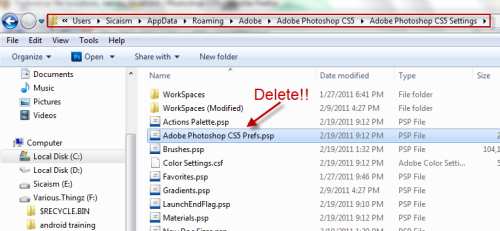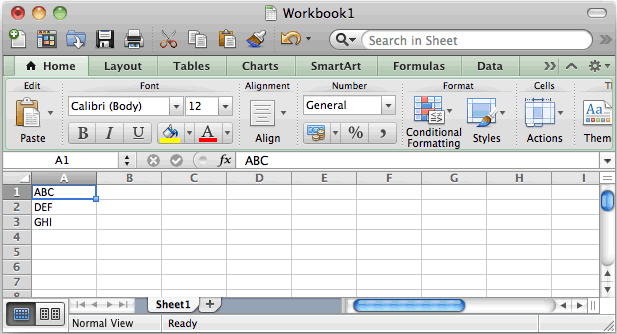How To Reset Open File For Adobe Mac

Adobe gold support once told us the best way to get rid of old versions of Adobe Creative Suite is to reimage the Mac. All jokes aside, that's what we did.
Adobe Illustrator stores all settings within a folder contained in the program files. This includes default settings that will be regenerated if you delete the folder.
Can't Open Adobe Files
It will also contain all of your personal settings. Personal settings won't be regenerated if you delete the settings folder. If you're using a PC, remove the file titled 'AlPrefs' from the Illustrator program folder.
To delete the folder on a Mac, remove the file named 'Adobe Illustrator Prefs' from the Illustrator program folder. Adobe Illustrator will then return to the original layout and tool settings. You don't have to delete the entire settings folder to reset Adobe Illustrator to default mode. Removing your current personal settings while leaving the default settings in place can be done from the program startup.
On a PC, press 'Alt-Control-Shift' and launch Illustrator, holding until you see the start-up screen appear, to clear all current personal settings. If you're on a Mac, hold 'Option-Command-Shift' to delete your personal settings. This will cause the default settings and work space layout to appear for use.
RESETTING THE LIGHTROOM PREFERENCES FILE Quite often when trouble-shooting a Lightroom problem, it will be suggested that you 'reset' or 'trash' your Preferences file. This procedure is often remarkably successful at fixing what are otherwise inexplicable problems. Before you start It would be useful to understand some implications, before embarking on the reset action. Firstly, resetting the Preferences file will cause Lightroom to create a new one when it is next started, and this new file will have all settings at their default positions.
How To Open A Mac
If the act of resetting the preferences file fixes the initial problem then obviously you will want to keep the new file. However, any changes which you had previously made to the Lightroom Preferences will have been undone. In itself, this is a simple thing to correct: you could for example take a screenshot of each of the 5 to 7 tabs in the Preferences settings before the reset, then a simple comparison after the reset will enable you to restore the settings to the way you had them. Similarly, any changes you have made to the various Grid and Loupe View Options will also be reset to defaults, so again a screenshot of the View Option tabs ( Ctrl+J on Windows, Cmd+J on a Mac) will help in restoring things back to the way you had them.
Secondly, in the event that the reset doesn’t cure the problem, you may wish to revert to the original preferences. This means that the original preferences file should be retained, which is achieved by either moving it away from its current location, or more simply by renaming it, e.g. By adding “old” to the file extension. One other thing before starting ( Lightroom 1 to 5 only): make a note of the name and location of your existing catalog, as you will need this knowledge after the preferences file has been reset. This information can be found in the General Tab of the Catalog Settings on the Lightroom Menu (Mac) or Edit Menu (Windows).
Resetting the Preferences File – Lightroom 1 to 5 only On Windows systems: 1. First, locate the existing Preferences file: the easiest way to find it with Lightroom active is to go to Edit menu > Preferences > Presets tab and press the Show Lightroom Presets Folder button. If you cannot start Lightroom, then use Windows Explorer to navigate directly to C: Users [yourusername] AppData Roaming Adobe Lightroom Preferences - note that AppData may be hidden by default, but you can type%appdata% adobe lightroom into the Start menu search box and you’ll be taken directly to the Lightroom user folder. Whichever way you choose to find that folder, close Lightroom before going any further. In the Lightroom user folder will be the Preferences sub-folder which contains the “Lightroom X Preferences.agprefs” file(s) (there may be other older versions if you have upgraded Lightroom) - move the complete Preferences sub-folder to another location outside the Lightroom user folder or simply rename it, and then restart Lightroom. On Mac Systems: 3.
Locate the file: you’ll find “com.adobe.Lightroom X.plist” with the other Preferences files rather than Lightroom’s Presets, so using Finder you’ll need to navigate directly to Macintosh HD/Users/[your username]/Library/Preferences/. The Library folder is hidden by default, so in Finder hold down the Alt (Option) key while using the Go menu. The user library folder will then be listed below the current user's home directory. As with Windows, close Lightroom and move the plist file to another folder or rename it, but do not restart Lightroom yet.
All postings and use of the content on this site are subject to the. Apple Footer • This site contains user submitted content, comments and opinions and is for informational purposes only. Apple disclaims any and all liability for the acts, omissions and conduct of any third parties in connection with or related to your use of the site.  Apple may provide or recommend responses as a possible solution based on the information provided; every potential issue may involve several factors not detailed in the conversations captured in an electronic forum and Apple can therefore provide no guarantee as to the efficacy of any proposed solutions on the community forums.
Apple may provide or recommend responses as a possible solution based on the information provided; every potential issue may involve several factors not detailed in the conversations captured in an electronic forum and Apple can therefore provide no guarantee as to the efficacy of any proposed solutions on the community forums.